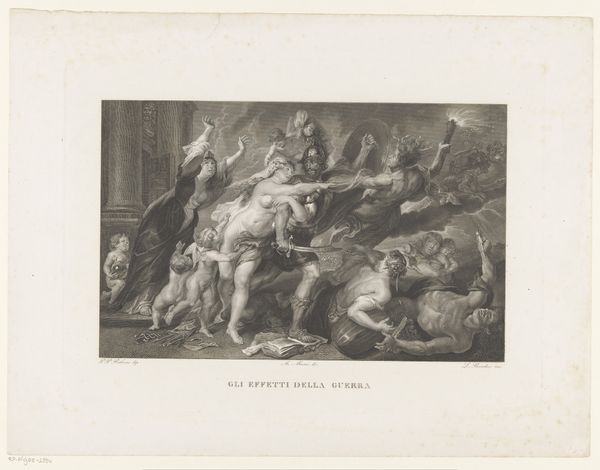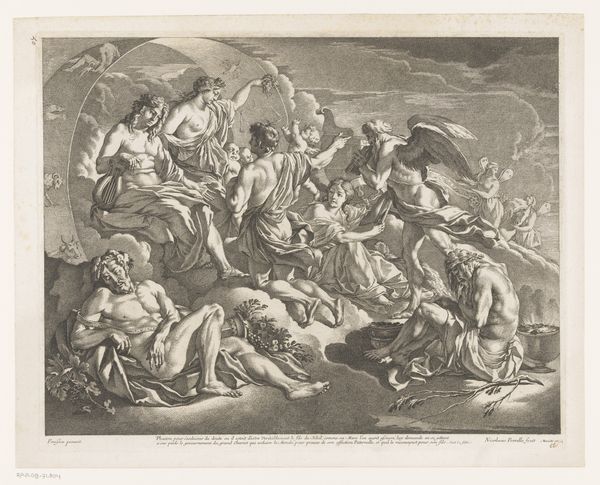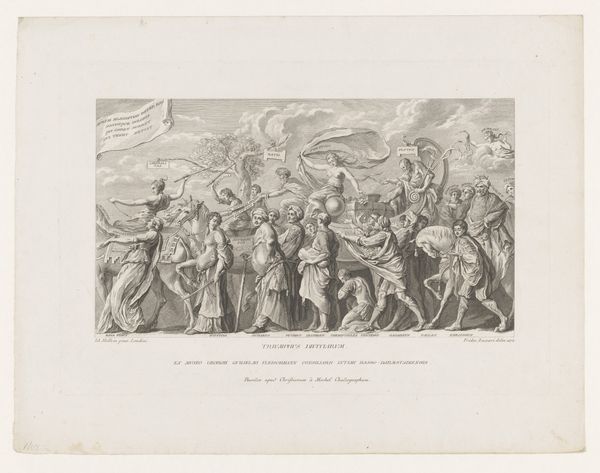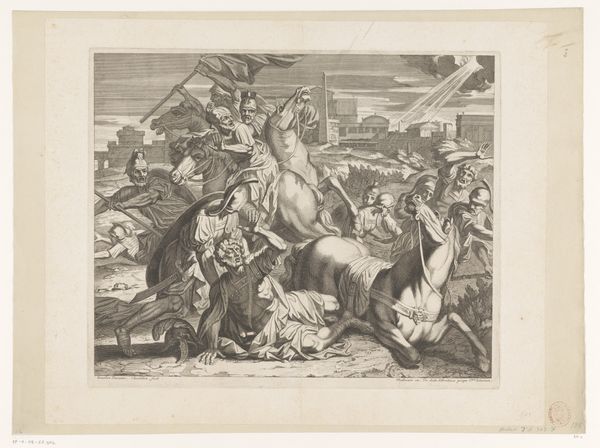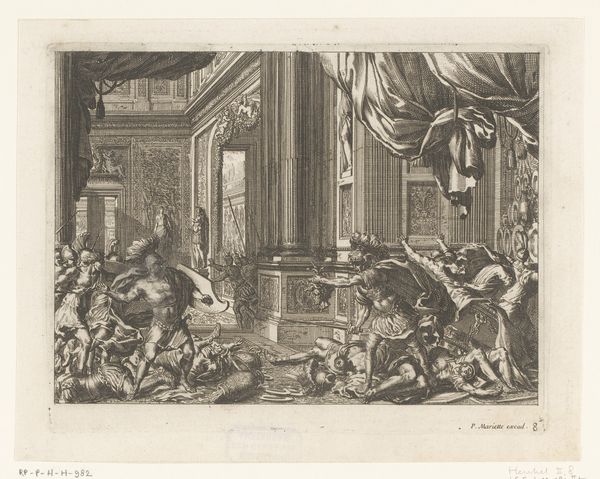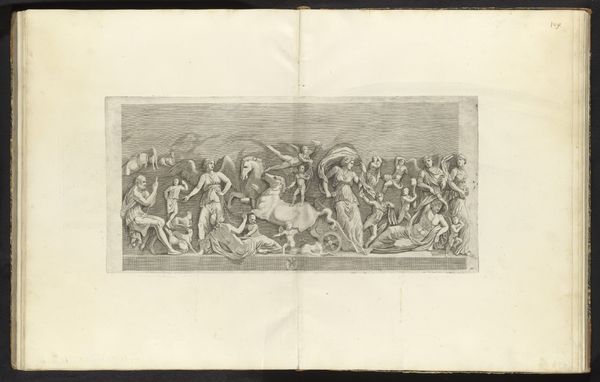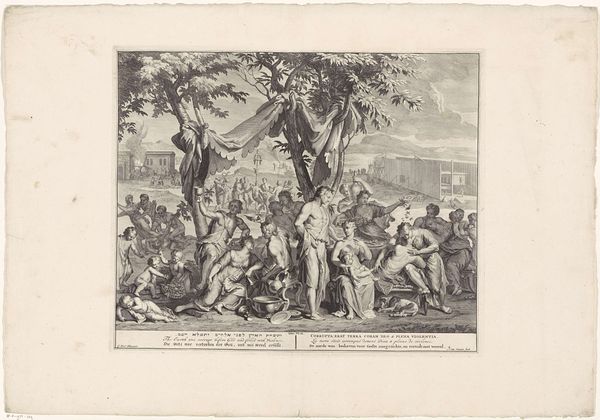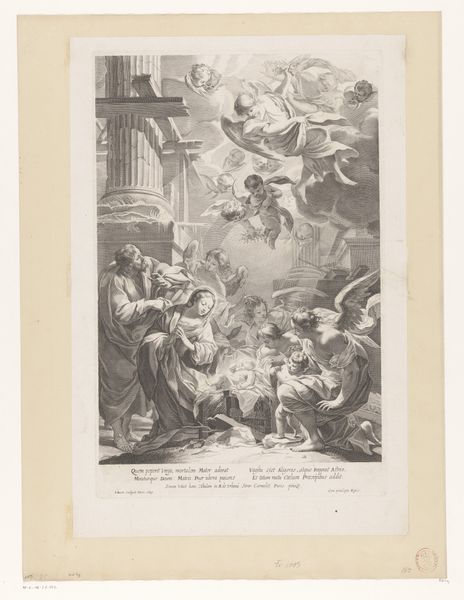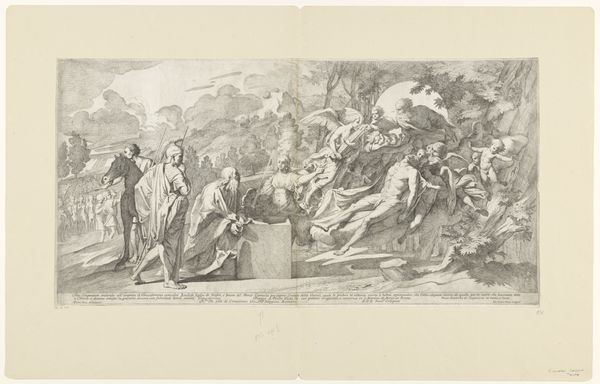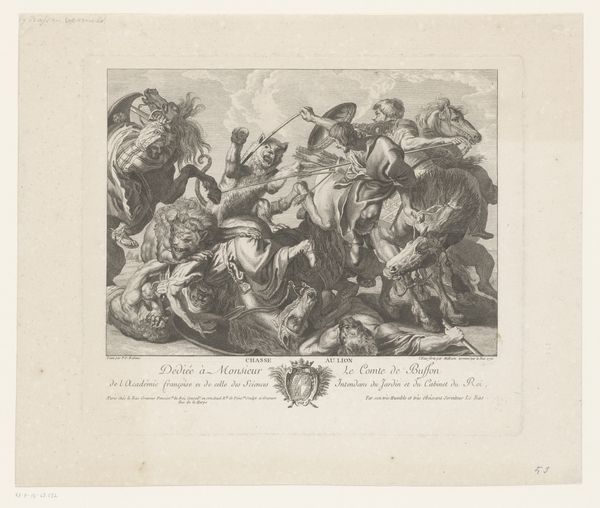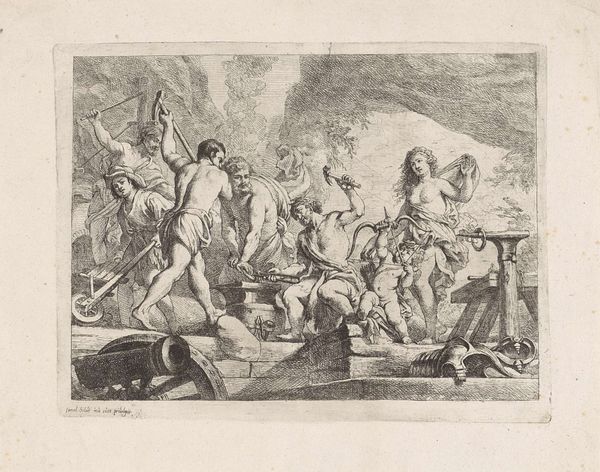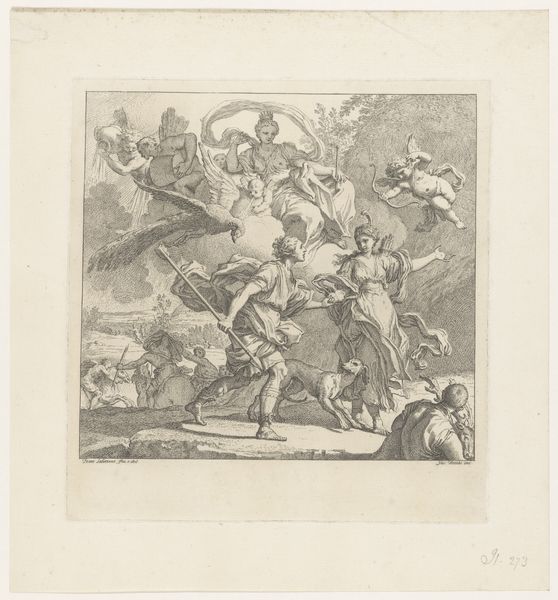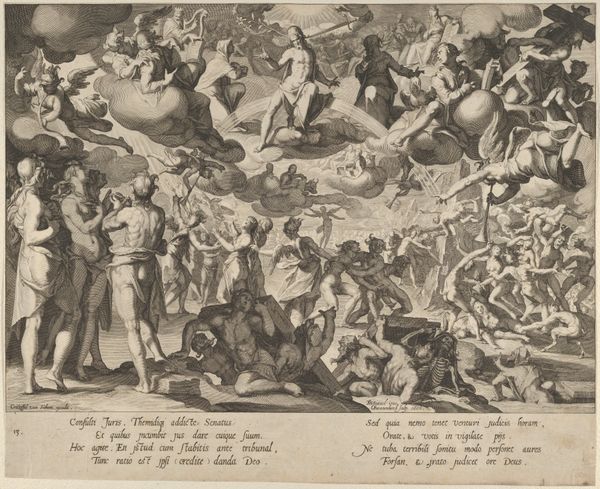
Dimensions: height 278 mm, width 408 mm
Copyright: Rijks Museum: Open Domain
Curator: Let's take a look at this print entitled "Apotheosis of Henry IV, King of France," which we believe was produced sometime between 1800 and 1840 by J. Duthé. Editor: My goodness, what a theatrical scene! It's swirling, full of figures…are those clouds they’re ascending into? There’s almost a…carnivalesque feeling about it, despite the gravity suggested by the architecture and historical subject. Curator: Yes, it's a really dynamic composition! From an intersectional perspective, this artwork represents the visual language used to construct and legitimize power during periods of monarchy and transition. Consider the visual rhetoric here – the classical allusions, the divine right, and the portrayal of idealized figures. Editor: Divine right indeed! So many cherubs and… is that Zeus up there? There’s so much happening, it's hard to focus. And, is that a dog just chilling in the middle of it all? It feels delightfully absurd, doesn't it? A sort of high-art photobomb. Curator: Precisely. The engraving utilizes Baroque stylistic elements such as dynamic composition, strong contrasts, and elaborate details to create a sense of drama and grandeur, and a focus on symbolism reinforces the narrative of ascension, reinforcing the authority of the King within the historical context of early 19th century French art and power. The themes here – the nude figures, the allegory, the references to the French court - construct very particular ideals and messages about power, divinity, and national identity. Editor: Looking closer, the lines are just incredible, it's wild to think of that much detail rendered on this scale through engraving. I get such a feeling of ambition from the piece, of wanting to impress…and maybe overwhelm. Almost like trying too hard to be taken seriously. Curator: I agree; there’s a kind of…excess in its visual language. In its allegorical portrayal, we see the effort to link Henry IV's legacy to concepts of virtuous leadership and dynastic strength, something quite calculated within post-revolutionary discourse. Editor: So, on leaving this piece, I'm left with the overwhelming urge to giggle, and think more about the little doggo just having a day out. Curator: And I am left thinking about how images such as this functioned – and continue to function – in constructing narratives about power and authority. Food for thought!
Comments
No comments
Be the first to comment and join the conversation on the ultimate creative platform.
